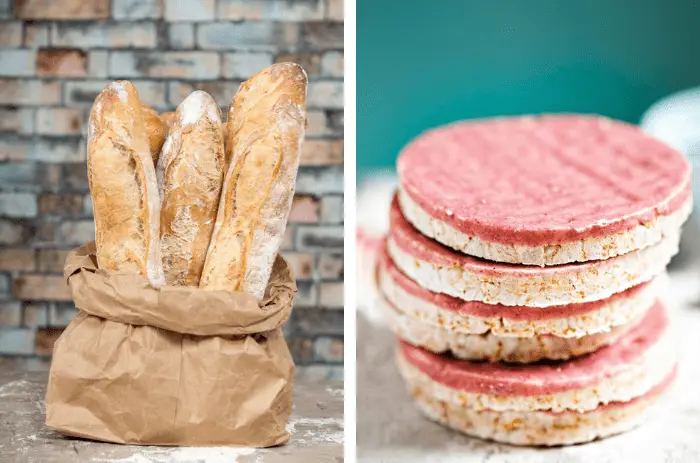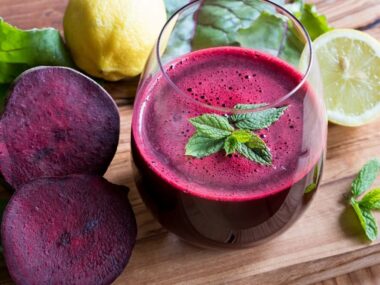Have you ever found yourself torn between two delicious options at the grocery store: rice cakes and bread? These two carb-filled goodies may seem similar at first glance, but they actually have some notable differences that can affect your taste buds, health goals, and overall culinary experience. In this blog post, we’ll explore the dissimilarities between rice cakes and bread, helping you make an informed choice during your next snack attack or breakfast dilemma.
Rice Cakes: The Light and Crunchy Delight
Rice cakes, oh how they can mesmerize us with their airy crispiness. Picture this: you take a bite, and the sound reverberates in your ears as the delicate rice grains crackle beneath your teeth. It’s like having your own little fireworks show in your mouth! These thin, circular discs are made from puffed rice grains that have been compressed together. The result? A light and satisfying snack that’s perfect for those who crave a guilt-free crunch.
Here are some key characteristics of rice cakes:
- Texture: Rice cakes are renowned for their distinctive crispy texture. With each bite, you’ll experience a delightful combination of airiness and crunch, which can be quite addictive.
- Caloric Content: If you’re watching your calorie intake, rice cakes may be your ally. They are generally lower in calories compared to bread, making them a popular choice among health-conscious individuals.
- Gluten-Free Goodness: For those with gluten sensitivities or celiac disease, rice cakes come to the rescue. They are naturally gluten-free since they are made from rice, which is a safe option for individuals following a gluten-free diet.
- Versatility: Rice cakes are like the chameleons of the snack world. They can be enjoyed plain, topped with spreads like peanut butter or avocado, or even used as a base for creative and colorful canapés.
But hold on a second, let’s not forget about their contender in the culinary arena: bread.
Bread: The Timeless Staple
Ah, bread, the ever-reliable companion to our morning toast and the foundation of countless sandwiches. From rustic baguettes to fluffy white loaves, bread has been a dietary staple across cultures for centuries. While it may not have the same ethereal crunch as rice cakes, bread offers its own unique charm and a wide range of flavors and textures to tantalize your taste buds.
Here’s what you need to know about bread:
- Texture Galore: Bread comes in various textures, ranging from crusty on the outside and soft on the inside to dense and hearty. The world of bread is vast and diverse, catering to every preference and occasion.
- Nutritional Profile: Bread can be a significant source of nutrients, depending on the type you choose. Whole-grain bread, for example, is rich in fiber, vitamins, and minerals, making it a wholesome choice for those seeking a nutrient boost.
- Baking Artistry: Baking bread is truly an art form. The process of kneading, proofing, and baking creates a symphony of aromas that waft through your home, bringing warmth and comfort to your heart and stomach.
- Endless Possibilities: From sandwiches to French toast, bread opens the door to endless culinary creations. Its versatility allows you to experiment with different flavors and ingredients, making it a versatile canvas for your gastronomic adventures.
Spotting the Differences
Now that we’ve explored the distinct qualities of rice cakes and bread, let’s dive deeper into the differences that set them apart:
- Ingredients: Rice cakes are primarily made from puffed rice grains, while bread typically consists of flour, water, yeast, and sometimes additional ingredients like salt, sugar, or fat. The variance in ingredients contributes to the contrasting tastes, textures, and nutritional profiles of the two.
- Texture and Taste: Rice cakes offer a delicate crunch and a relatively neutral taste, allowing them to pair well with various toppings. On the other hand, bread’s texture and taste can vary greatly depending on the type of bread you choose, ranging from soft and fluffy to dense and flavorful.
- Caloric Content and Nutritional Value: Rice cakes generally have fewer calories than bread due to their simple composition. However, bread can provide a broader array of nutrients, particularly if you opt for whole-grain or artisanal varieties.
- Dietary Considerations: Rice cakes are naturally gluten-free, making them a suitable alternative for individuals with gluten sensitivities or those following a gluten-free diet. Meanwhile, bread contains gluten unless it is specifically labeled as gluten-free or made from alternative flours.
The Choice is Yours
Ultimately, the decision between rice cakes and bread boils down to personal preference, dietary needs, and culinary aspirations. If you’re craving a light and crispy snack with fewer calories, rice cakes might be your go-to option. On the other hand, if you seek a wider range of flavors, textures, and nutritional benefits, bread could be the winner for you. Luckily, you don’t have to choose just one; you can enjoy the best of both worlds by incorporating both rice cakes and bread into your eating routine.
So, next time you find yourself at the grocery store, take a moment to ponder: rice cakes or bread? Embrace the joy of variety, and let your taste buds guide you towards the perfect choice for each occasion. Whether you’re indulging in the satisfying crunch of a rice cake or savoring the comforting warmth of a freshly baked loaf, both rice cakes and bread have their unique place in the culinary tapestry of our lives. Enjoy every bite and savor the moment, knowing that you’ve made an informed decision about the difference between these two delightful delights.



